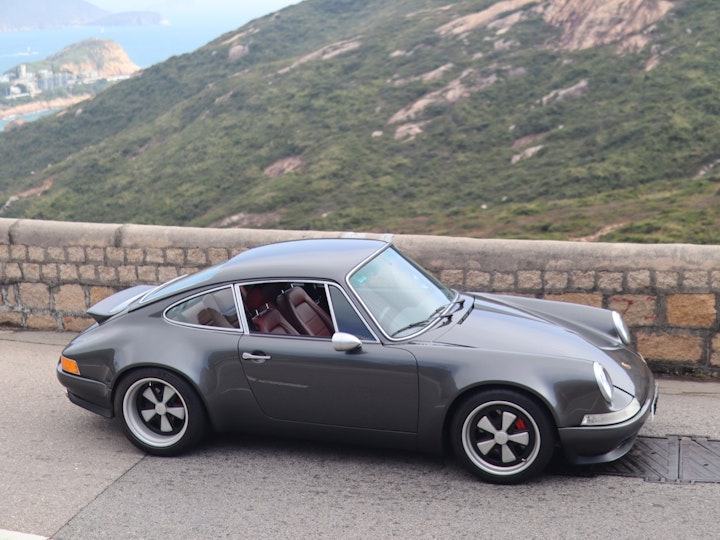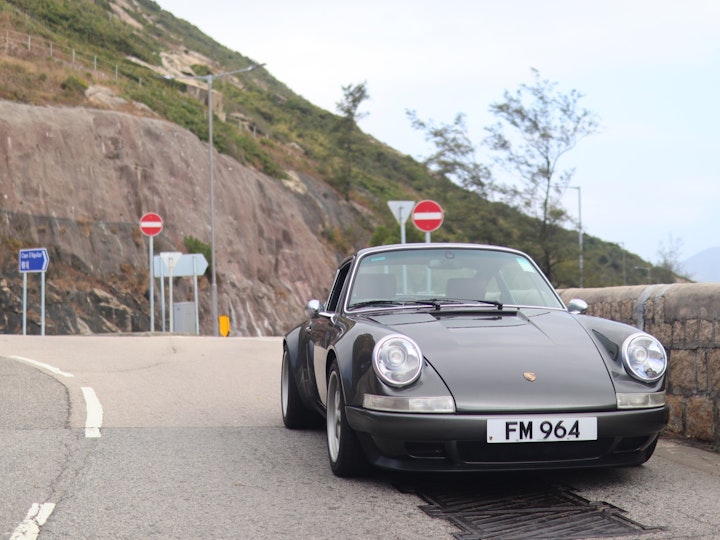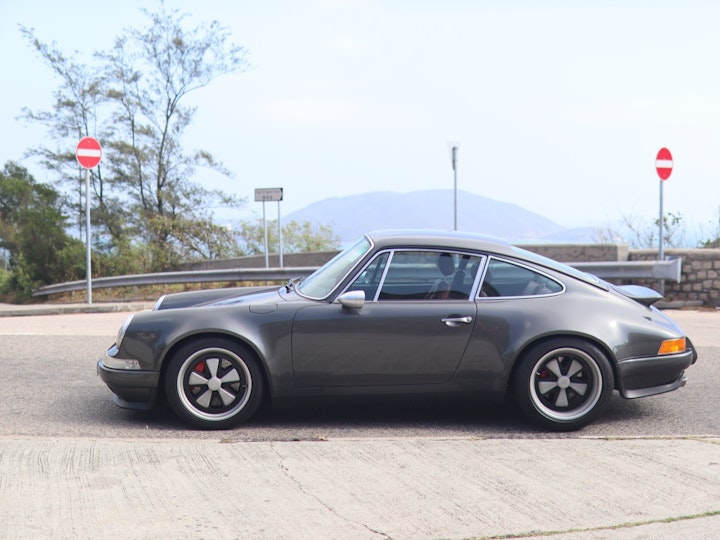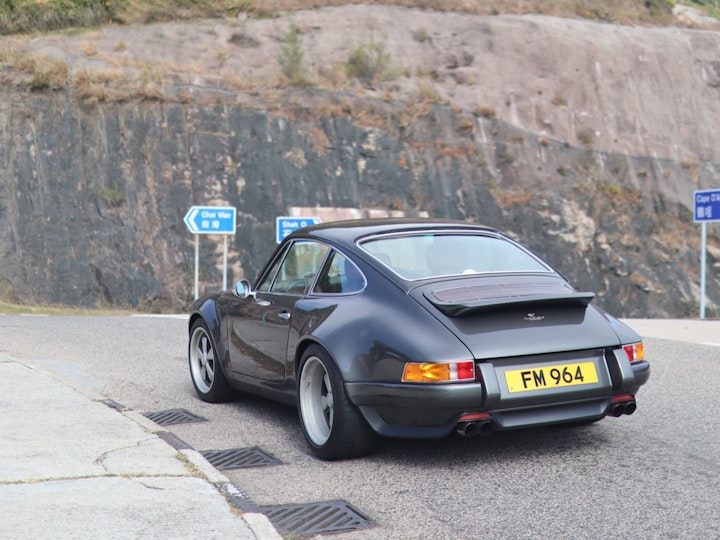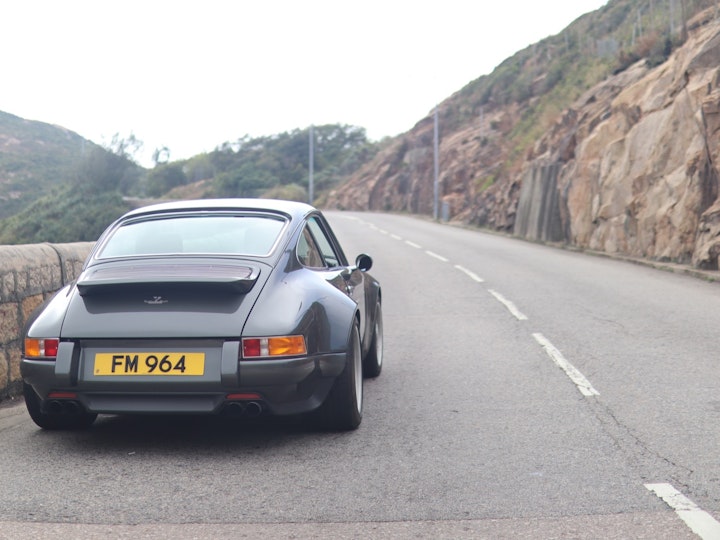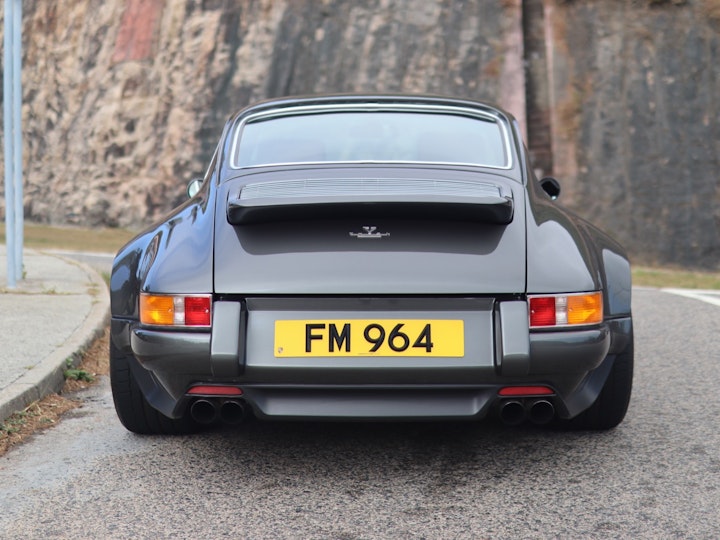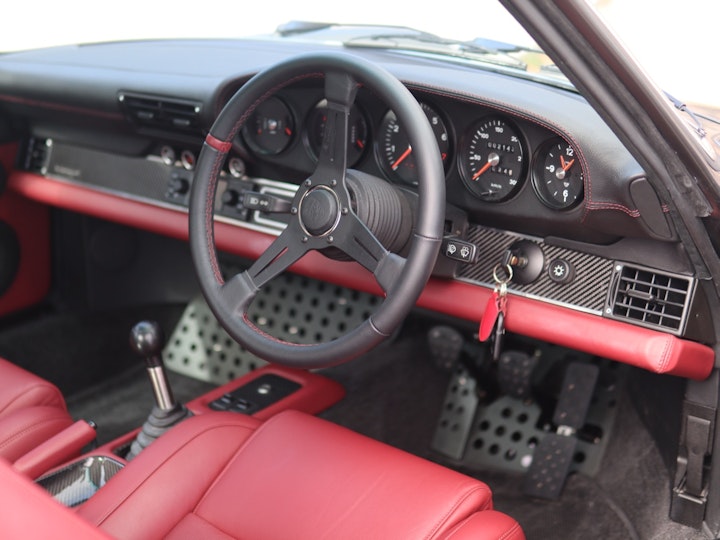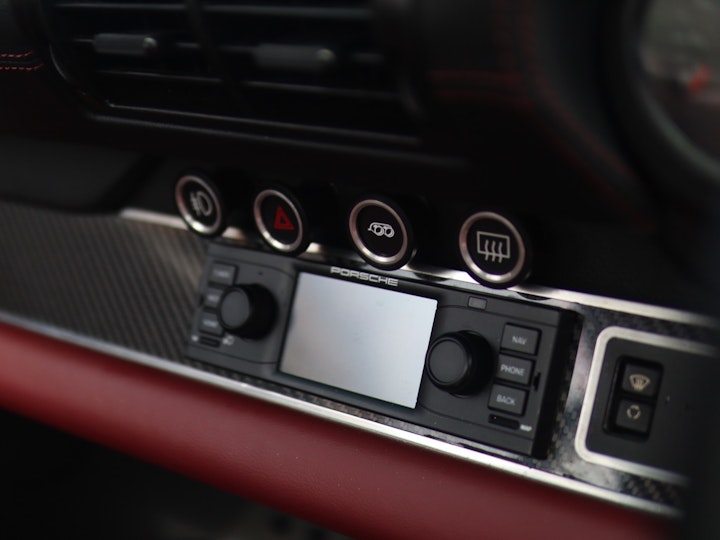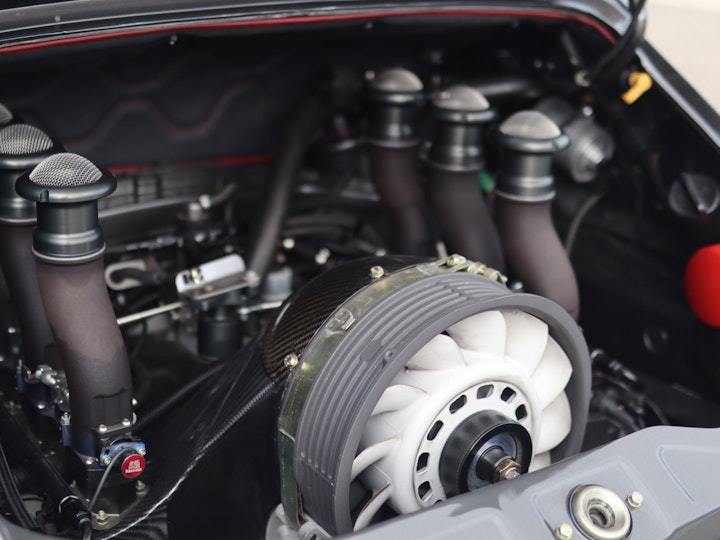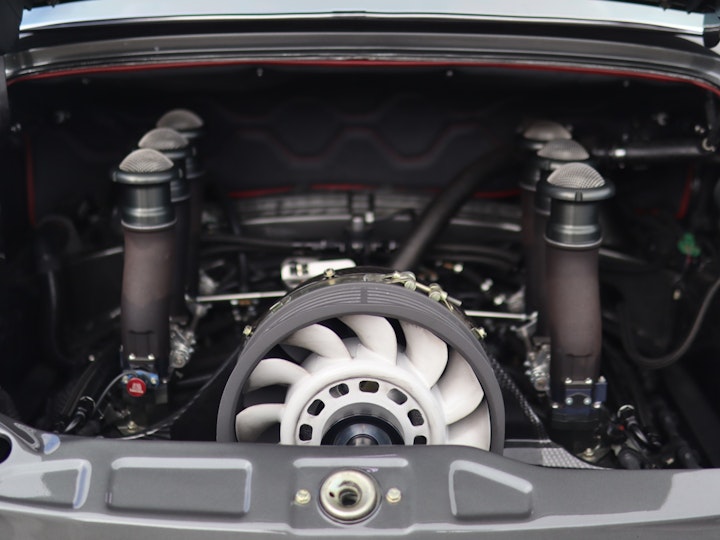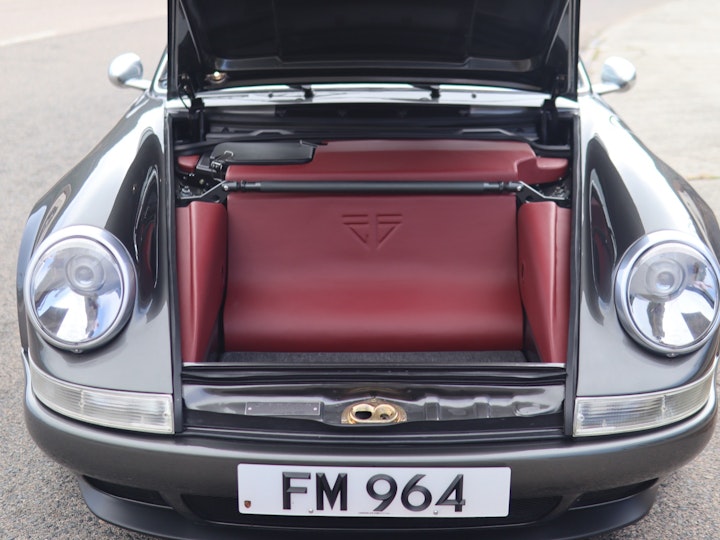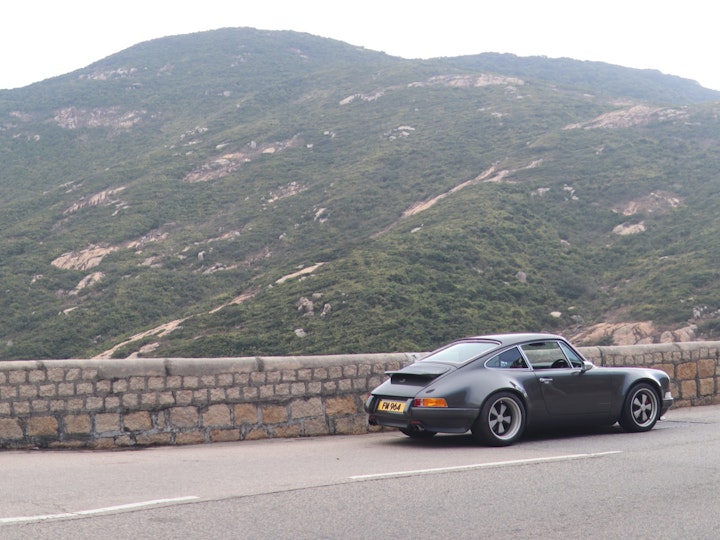We are really quite lucky to live in an extraordinary city like Hong Kong where, despite being a very small place, we have a disproportionate amount of restomod 911’s. We have 20+ Singers, at least one car by Autofarm, one of the first customer cars by Kaega, and today we have the third ever customer car by British restomod company, Theon Design. Theon Design was founded by Englishman Adam Hawley who comes from a rather impressive technical background. He was a designer for 15+ years prior to founding Theon Design, and had stints in the auto industry (including Lotus, BMW, and Jaguar) as well as the aero industry (including working on the Airbus A380). So the Theon Design Porsche is the real deal.
Like Singer, Theon Design only modifies the Porsche 964. The car we have today, the first ever Theon Design in Hong Kong, started off life as a 1989 964 Carrera 4. Unlike Singer, however, Hawley stresses that they do not intend to “redefine” the Porsche 911, but instead to “refine” what is already a very good car. The exterior of the car has been backdated to the early 911 with the extended front bonnet and with the front and rear tracks widened in order to create that must-have widebody look. Wider front 17” and rear 18” Fuch wheels have replaced the originals to give the car better handling and a better stance.
The original 964 comes with a 3.6 litre naturally aspirated flat six engine producing around 250HP. Theon Design offers a few different engine upgrades, including a 3.8 litre, a 4.0 litre, and in the near future a supercharged version. The car we have today, designated as ‘HK001’, has the 3.8 litre engine producing about 375HP. To do so, aside from the engine capacity increase, Theon Design had installed individual throttle bodies, larger fuel injectors, bigger valves, and a brand new exhaust system. Like all reputable restomod projects these days, the engine must not only perform well, it also needs to be presented beautifully, as with the case in HK001. The engine is presented with leather surroundings, lots of exposed carbon fibre around the all-important engine fan, and six velocity stack intakes which rounds up the presentation of the engine beautifully.
All Theon Design 911’s come with fully adjustable KW suspensions. HK001 in particular also has the hydraulic front lift system which is helpful for compact cities like Hong Kong. No carbon brakes are needed for such a light car, so instead larger 964 Turbo brakes are used. The original 964 Carrera weighs about 1,400KG dry while the Theon Design 911 weighs about 1,100KG, shedding off around 250KG. To achieve this, aside from the extensive use of carbon fibre for the body panels, engine bay, and interior, Theon Design also gotten rid of a lot of unnecessary parts. For example, HK001 originally started life as a Carrera 4, but the car is now rear wheel drive only. What is impressive is the weight ratio is now 43:57, much improved from the original car. Theon Design achieved this by moving certain parts around, such as moving the heavy AC and power steering pumps from the rear to the front.
Getting into the car you immediately notice the completely retrimmed interior. The dash displays an exposed carbon fibre panel, but there are actually more unseen carbon fibre panels in the interior as they are covered by leather. A retro-looking head unit with all the latest gadgets such as iPhone connect and Bluetooth sits nicely in the middle of the dash. Look a little upwards and you see a sports exhaust button, just like the ones in modern Porsche’s, which allows you to make the car louder when needed. While I will later find out that the car is plenty loud enough as it is, the sport exhaust button is nevertheless a very neat modification which combines a popular modern function with an old car.
Setting off, the first thing I noticed was how heavy the pedals are. The clutch is quite heavy and rather unexpectedly, the throttle is quite firm. While I do not mind heavier clutches (in fact it gives it more character and reminds you that you are in a classic car), I can imagine it will be quite a task if stuck in Hong Kong traffic. The car actually does not sound too loud from the outside when idling or at low speeds, but once I stepped on the throttle it transformed into something else. The engine roars into life very loudly, which I welcome wholeheartedly as not many things sound better than a tuned aircooled flat six Porsche engine.
I always say that older cars are better sized for Hong Kong roads as they are more compact. Visibility is also great, which means that when blasting the car through the twisties, it is very easy to position your car nicely before and while attacking a tight corner. The brakes are good but it does not feel dramatically strong or modern, after all they are traditional brakes from a same period model. The ride is firm, but not to an extent of being irritating, allowing the car to take corners firmly and decisively. The pedals, although heavy, are positioned perfectly for heel and toe-ing. The gearshifts are great and generally do not draw attention to themselves.
One thing I must note is that, while the car has plenty of power, the way the power is delivered throughout the rev range was not how I had expected. At low revs power does not come strongly, if not a little sluggish, but once the needle passes 3,500rpm it just flies. Many instances I have had to consciously look at the rev counter to make sure I won’t bounce off the limiter. It is as if the car is turbocharged.
In summary, it is no doubt this is a very well thought out car that is a thrill to drive. The exhaust note alone makes the experience very special. Added with the handling, appropriate level of technology, and looks, one can see why restomod enthusiasts are willing to fork out, as at the time of writing, 400K GBP (approx. HK$4 million) for a Theon Design 911 (donor car not included). After all, it is ‘only’ about half of what it costs to commission a Singer 911. I understand that the folks at Theon Design are not particularly keen on people comparing them with Singer at the first opportunity, but it is hard not to. After all, they are two of the more well known 911 restomod companies in popular media, not to mention they offer an exciting US vs. UK rivalry story, which is something that has not been seen in the automotive world for a while.
As I have had the fortunes of reviewing the Singer 911 (HK15) before, I must make a comparison. And I think the most notable difference between the Theon Design and Singer cars, is that the Theon Design car feels relatively less modernized. The heavier clutch and throttle, the normal brakes, and the imperfect power delivery through the rev range, reminds you that you are first and foremost in a classic car. Whereas the Singer, on balance, feels more refined from a modernization perspective. The Singer is the more sophisticated car, while the Theon Design 911 is the more nostalgic one. They are just two different cars at the end of the day. As Theon Design’s founder said, they aim to refine the 911 and not redefine it. At first I thought this was just PR talk, but after the drive, I think that is the truth.
As mentioned in the beginning, we are very lucky to live in a city with such a variety of restomod 911’s, and I’m even luckier to get to test some of the best ones. I thank the owner for allowing us to review this very special restomod Porsche, and as always I thank the team for all their hard work.
Alex W. (http://www.taipanmedia.com)
Dave (Email: david@lemonadeandgiggles.com)
Alex C.: (IG: @nofishshark)
Martin: (IG: @visualspassport)
See our review video here:












